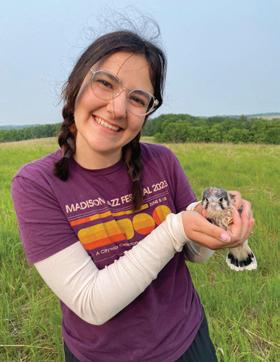




As we prepare for our 40th anniversary, I’m reminded that the true heroes of conservation are not agencies or governments, but people like you. Time and again, individuals have stepped forward when politics stalled and budgets shrank. A farmer installing buffer strips on family land, a teacher planting pollinator gardens with students, a donor ensuring protection of a beloved river –these are the acts that save Wisconsin’s natural heritage.
Today, the need is greater than ever. Federal and state support has withered, biodiversity is declining,
OUR MISSION
and what remains of our natural landscape is being fragmented. Only through private philanthropy and bold partnerships can we turn the tide. NRF is committed to convening, facilitating, funding, and leading. But we cannot do it alone.
Together, we can protect Wisconsin’s lands, waters, and wildlife for the generations that follow. Thank you.


David Clutter Executive Director
Protecting Wisconsin’s lands, waters, and wildlife by providing funding, leading partnerships, and connecting all people with nature.

Dave Adam
Board Chair
Michael Williamson
Vice Chair
Kris Euclide
Secretary
Marty Henert
Treasurer
Amy Alstad
James Bennett
Linda Bochert
Beckie Gaskill
Lisa Gaumnitz
Rebecca Haefner
Jaimes Johnson
Kristine Krause
Mark LaBarbera
Scott Valitchka
David Zeug
David Clutter
Executive Director
Michaela Daly
Executive Assistant
Naomi Hadley
Donor Relations Coordinator
Shari Henning
Administrative Director
Brenna Holzhauer
Grant Writer
Marie Jensen
Conservation Program Specialist
Alex Kaspar
Gifts and Grants Administrator
Kim Kreitinger
Field Trip Coordinator
Jane Nicholson
Annual Giving Manager
Chris Ott
Major Gift Officer
Emma Schatz
Digital Communications Coordinator
Ben Strand
Director of Philanthropy
Christine Tanzer
Field Trip Director
Shelly Torkelson
Communications Director
Caitlin Williamson
Director of Conservation

It’s like being a tourist in your home state, but worlds removed from water parks and fish boils.
– Field Trip Participant

POLK COUNTY
Birding the pristine lakes, mature oak forests, and thriving wetlands at Straight Lake Wildlife Area
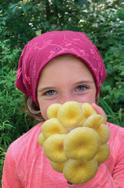
DANE COUNTY
Hunting for fruiting fungi at Olson Oak Woods

BURNETT COUNTY
Marveling at flowers, bees, butterflies and birds in globally rare pine-oak barrens
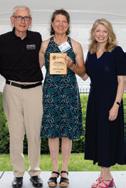
CONGRATS to our Field Trip program for winning an award from Governor Tony Evers through the Wisconsin Office of Outdoor Recreation!
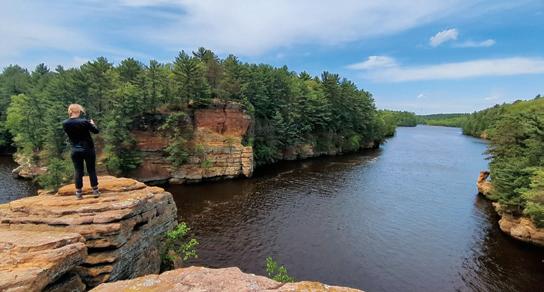
THIS YEAR’S GREAT WISCONSIN BIRDATHON SOARED TO NEW HEIGHTS
RECORDS BROKEN
$127,001 raised for bird conservation 91 teams across Wisconsin •
620+ birders participated •
283 SPECIES SPOTTED
TOP FUNDRAISING TEAM
Cutright’s Old Coots ($27,637 raised)
MOST SPECIES SEEN by The Lincoln Sparrows (204 species)
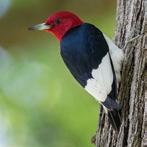
$1 MILLION Total amount raised since the Birdathon started in 2012
BIRD OF THE YEAR: REDHEADED WOOPECKER
Seen by GLC Chickadees in 2025 Birdathon
By Sunil Gopalan, NRF Field Trip leader and National Geographic photographer
There are more than ten thousand species of birds in the world, with over a thousand in North America. Yet, increasing development and urbanization seem to have pushed them out of sight and out of mind. But finding them and capturing a fleeting moment in their lives can be a powerful way to reconnect with nature.
The challenge of observing a small and wary creature with the capacity for flight is compounded many times over when attempting to actually photograph it. Be prepared for a lot of misses. It is incredibly important to enjoy the moment in order to avoid being frustrated by results. When it works, it’s magic. Here are some key considerations to help you get started or sharpen your skills.

Learn how your camera handles autofocus (AF), including focus modes, AF points, subject tracking, and back-button focus. Practice adjusting key settings without taking your eye off the viewfinder.
When using direct sunlight, try to keep your shadow pointing at your subject. This ensures the bird is welllit. Overcast days offer soft, even lighting and can be perfect for detailed portraits. Want to get creative? Try backlighting to silhouette your subject or highlight feathers with a rim of light.
Even though modern cameras can be complex, the fundamentals of the exposure triangle (ISO, aperture, and shutter speed) are the same as ever. Know how to change each one independently.
A technically perfect photo still needs good composition to stand out. Use the rule of thirds: a balanced image is best achieved by placing key elements — whether that is the bird or a key part of the habitat — along thirds of the frame. Also, include negative space. It is important to leave an uncluttered area to define and emphasize the subject.
Like with most other forms of photography, strive to do more than just document your encounter. What is it you want the viewer to see? Birds have complex behaviors and you will want to think about how to capture the fleeting moments that highlight something special. Focus on unique behaviors, expressions, or interactions.
Don’t be afraid to experiment. Perspective is powerful — show us something we haven’t seen before.
Ready to try some of Sunil’s tips? Submit your nature photos to NRF’s annual Photo Contest. Help inspire conservation in our great state, and maybe win a prize, too! Enter by November 1. WisConservation.org/Photo-Contest

YOUR REQUIRED MINIMUM DISTRIBUTION CAN MAKE A BIG IMPACT ON THE ENVIRONMENT.
The SECuRE 2.0 Act of 2022 allows individuals over the age of 73 to donate to NRF directly from their retirement accounts. Many companies provide easy online options for direct giving. If you have a 401(k), 403(b), 457 plan, SEP IRA or SIMPLE IRA, you may be eligible for a tax benefit by directing your annual withdrawals to support NRF. Ask your tax professional how the SECURE 2.0 Act of 2022 affects you. Your legacy gift will support Wisconsin’s most critical conservation needs and protect our natural wonders for generations to come. EIN# 39-1572034
rvati on.org/Planned-Giving
By Shelly Torkelson, Communications Director
This summer, I arrived early for a volunteer workday at a state forest. Since I had an hour to spare before the work started, I decided to take a little nature walk.
First, I walked through a lush pollinator planting which was wild with blooming flowers. The trail continued through a tranquil forest of maples, which opened into a huge grassland. A bluebird flew across the path right in front of me and perched confidently in an oak tree. Rounding a bend in the trail, the wood-sided nature center came into view. It was flanked by a newly planted rain garden, fresh paths, and a cute little bridge.
I’d barely scratched the surface of this state forest’s six miles of trails. I didn’t even have time to see the ponds or wetlands. I’m sure by now
you’ve guessed exactly where I was.
You guessed right — I was in the middle of Milwaukee’s north side.
Havenwoods State Forest is an unexpected treasure: 237 acres (nearly 200 football fields) of wildlife habitat smack dab in Wisconsin’s most populous city.
At Havenwoods, NRF has provided grants to support trail accessibility, pollinator plantings in their Naturalist Backyard area, habitat creation, and educational programming and signage. Most recently, NRF has been helping the Wisconsin DNR fix up the rain garden: removing invasives, renovating the basins, installing paths and a small bridge, and planting native plants with the help of volunteers.
After my nature walk at

Havenwoods, I rolled up my sleeves and got to work planting pollinator plants like wild indigo and orange coneflower in the rain garden.
In between planting and mulching, one of my fellow volunteers, Tre, said “It’s peaceful here, with the birds chirping and everything.” He lives up the road from Havenwoods and remembers coming to the forest with his school and daycare when he was a kid.
Havenwoods has gradually been able to get more people out to visit and, thanks in part to funding from NRF, Union Pacific Foundation, and Johnson Controls, they can now provide more educational programs than ever before. Thank you to these funders (and NRF’s members) for improving habitat and public access at Havenwoods!

YOU’RE IMPROVING WILDIFE HABITAT AND OUTDOOR RECREATION
The Cherish Wisconsin Outdoors Fund reached a big milestone this summer: $3 million to safeguard our state’s public lands for generations to come! Wisconsin boasts over 1.5 million acres of publicly owned forests, prairies, streams, lakes and parks. But conservation is more than just setting aside land — it requires active stewardship of that land. In 2012, we and the DNR established the Cherish Fund to provide a permanent source of funding for habitat improvement and ecological restoration in state natural areas, parks, trails, wildlife and fisheries areas, recreation zones and forests.
The fund grows when Wisconsinites make small donations while purchasing their hunting and fishing licenses or when they give directly to the fund. Most donations are $10 or less, but it adds up quickly.
Three million dollars is an amazing milestone, but with all the challenges facing nature in Wisconsin, it
BRINGING WISCONSIN’S PINE BARRENS BACK TO LIFE
From freezing winter mornings to blazing summer days, crews are working year round to restore globally rare habitat at Waazija Haci State Natural Area. With support from NRF, the DNR’s Natural Heritage Conservation Program successfully cleared 10 acres of undesirable trees, shrubs and brush and opened the site’s shady canopy of oaks, allowing more sunlight to reach the forest floor. They also removed spreading aspen which was crowding out other species. These steps will help jack pines and flowering plants thrive in the unique pine barrens habitat.
Waazija Haci is the first State Natural Area in Wisconsin to be named by one of the state’s recognized Tribes. The Ho-Chunk Nation chose the name “Waazija Haci,” which means “people of the pines” in the Ho-Chunk language. The site lies between two developed areas owned by the
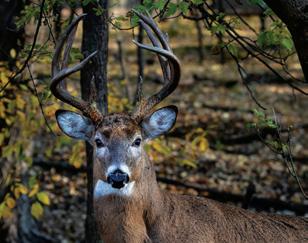
is not yet enough to protect our biodiversity. The fund is currently able to support approximately $100,000 per year in conservation work. As Cherish continues to grow, so will its impact.
The needs are great, but they are not insurmountable. When hunters and anglers make donations while renewing their licenses, they are making a difference with every dollar.

Ho-Chunk Nation, and its restoration creates more opportunities for traditional uses like blueberry foraging, which will be further enhanced through ongoing prescribed fire and habitat work.
Learn more about the work at Waazija Haci at WisConservation.org/Blog.
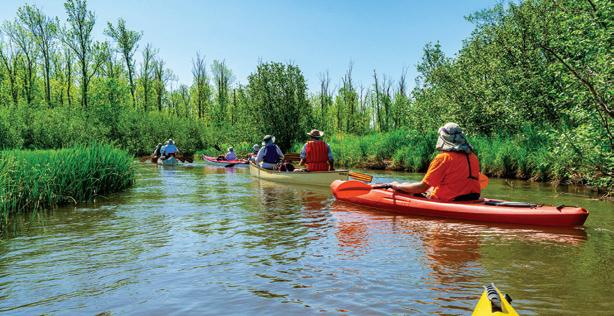
By Emma Schatz, Digital Communications Coordinator
“Hey buckthorn! What are you doing in my swamp???” – Shrek (if he lived in Bibon Swamp)
While it may not be home to the famous green ogre, Bibon Swamp State Natural Area is home to some incredible species like northern parula and palm warbler. NRF is helping to support the battle against invasive buckthorn, which threatens the habitat of these and many other species. A variety of ecosystems span its 14,000 acres — a wet-mesic conifer swamp filled with 150-year-old white cedar, a wet forest dominated by black ash, a northern sedge meadow, and coniferous peatlands. Additionally, 15 miles of the White River flows through it. In this Class 1 trout stream, people can fish right from their canoes.
Throughout these quality habitats, the threat of invasive buckthorn lurks. Buckthorn outcompetes native plants, blocking sunlight from reaching other plants below.
Thanks to support from NRF and Boreal Waters Community Foundation, a crew from the Wisconsin DNR cleared 25 acres of buckthorn at Bibon Swamp, improving habitat and fishing access.
Bibon Swamp’s name comes from a derivation of the Anishinaabe word, Biboon, meaning “winter.” It lies within the ceded territory of the Ojibwe people where they have retained the right to hunt, fish, and gather. Parts of Bibon Swamp are classified as Native Community Management Areas where native flora and fauna are protected to maintain precolonization biological diversity.
The work done at Bibon Swamp was part of a larger project to restore 30 acres of rare and biodiverse habitat across three State Natural Areas in Bayfield County: Inch Lake, Lake Two Pines, and Bibon Swamp. The three sites lie within 12 miles of each other, creating a natural corridor through the heart of Bayfield County.

MEET OUR NEW CONSERVATION PROGRAM SPECIALIST, MARIE JENSEN
Marie is from Janesville, Wisconsin and earned a B.S. in Conservation Biology from UW-Madison in 2022. Before joining NRF, she was the Volunteer Management Specialist for the Wisconsin DNR’s Snapshot Wisconsin program. Her work experience has taught her that she particularly enjoys the “people” side of conservation and connecting the public with opportunities to steward the land we share. She enjoys arts and crafts, reading science fiction and fantasy, and scenic hikes or prairie walks to look for interesting bugs. She’s excited to join the Conservation team and to help power NRF’s impactful work.

MEET OUR NEW MAJOR GIFT OFFICER, CHRIS OTT
Chris grew up in Wisconsin: first Milwaukee, then in the town of Fredonia in Ozaukee County. From an early age — during outdoor trips all over Wisconsin and sometimes further — his parents gave him an appreciation for nature. He and his husband regularly visit the great county and state parks in the Madison area that are dog-friendly (they have two). Favorites include Cherokee Marsh, Governor Nelson, Indian Lake, and Harrington Beach. Chris has spent more than 20 years at nonprofits, including Fair Wisconsin and the American Civil Liberties Union. He’s excited to join NRF because of the direct focus on conservation. He knows nature faces a lot of challenges, and he’s looking to get to know our supporters and help them find ways to create a better future.

Bruce’s contributions to NRF over his 21 years on our board of directors are hard to top. He played a significant role in the organization’s founding, gave NRF its first $100 donation, led several committees, and also served as board chair. His warmth, thoughtfulness, and devotion to conservation has been unwavering. We deeply appreciate you, Bruce!

Tom has left a lasting mark on NRF during his 23 years of dedicated service to our board of directors. He is a passionate conservationist who has been steadfast in his commitment to protecting our state’s treasured lands, waters, and wildlife over the years. Thank you for your service on our board, Tom!
FEBRUARY 1, 2025 THROUGH JULY 31, 2025
The Foundation recognizes gifts made in honor of the following:
American Association of Zoo
Keepers-Milwaukee Chapter
Milwaukee County Zoo
Laurie Elwell
Spencer Niess
Karen Etter Hale
Susan and Robert Volenec
Kris Euclide and Doug Steege
Linda H. Bochert and David J. Hanson
Jim Addis
Lewis and Vicki Posekany
Amy’s Parents
Amy and Richard Staffen
Frank Berwig
Danielle Nelson
Bill Cowart
Connie Collopy
Noel Cutright
Kristine M. Krause and Scott Patulski
Kris A. McKinney
Martin and Pamela Murphy
Craig H. Dietz
Anonymous
Gregory and Jeanne Crea
Jim and Dede Femrite
Nancene Getchell
David and Brenda Heim
Junice Hochbrunn and Victoria Childs
Rachel Lane
Jane Leach and Beth Gatti
Scott and Cindy Monitor
Saint Paul & Minnesota Foundation
Stephanie Susens
David and Kim Wightman
Johanna Fabke
Janice Ketelle
Douglas E. Farnsworth
Debbie and Harlan Heller
Georgina Frankel
Martha Coventry
Dr. David Frogner
Matthew Berg
Jack Furtney
Lisa Gallagher-McGraw
Thomas J. Geitz
James and Corrine Anshus
James, Phyllis, and Jay Goers
Anonymous
Josephine Greason
Margaret Weiher
Robert J. Hamel
Linda and Wesley DeNering
Margaret Leonhardt
James “Jim” Hirt
Jeanette Arthur
Betty Azpell
Keith and Lynn Bruckner
David Gunnulson
Mark Martin and Sue Foote-Martin
Gypsy and Dixie
Julie Hellstrom
Naomi Hadley
Jeffrey Lang
Thomas Meyer
Curtis Witynski
Mother Nature
Betsy and Jim Matzinger
Patty and Ed Neumueller
Richard and Donna Reinardy
Pat and Marlene O’Connor
Ryan and Pat O’Connor
Janet Raddatz
Sheboygan County Master Gardener Association
Brenna, Pete, Sonora, and Rowan Schroepfer
Emily Hermans
The Foundation recognizes gifts made in memory of the following:
James and Christine Jensen
Dean and Karen Johnson
Bonnie and James Klamik
Daniel and Laura Kult
Judith Loose
Susan Mayhew and Brad Rochford
Jennifer Morris
Christine Murr and Ronald Reinert
Robert and Tracy Myers
John and July Randall
Kenneth and Sharon Schmeling
Debra Schramm
Beth and Ed Stawski
Dorothy Stocks
Janet Voegeli
Ann Walker
Janet Wintersberger
Peter Hoffmann
Micquel Hoffmann
Jim Jajewski
Susan Jajewski
Jake Jarzynski
Brian Reed
Andrew Jennings
Sheila Jennings George and Ron George
Eric Knapp
Cameron Family Charitable Fund
D. & S. Kohl
Timothy L. Kohl
Gary R. Krueger
Joseph and Meg Hendery
Beverly Kreul
Lisa Leister
Merle E. Kimball
Barbara Bowers
Cynthia Calhoun
Mary Callen
Gerald Kimball
Robert and Christine Scheadler
William R. Lawrence
Kathleen Harker
Richard E. Luthin
Kathleen Beretta
Barbara Bernard
Mary E. Blackmore
Janet Day
Hector and Linda De La Mora
David and Anna Drozdowicz
Nicole Elcano
Pamela Hazod
Bruce and Nancy Braun
Joseph Depauw
Donald and Marilyn Dufford
Jean Gadamus
James C. Graham
Fred and Jean Hoffman
Danny Krum and Linda Truckenmiller-Krum
Sheila Landsverk and Ron Hunt
Charles Luthin and Nancy Piraino
McWhorter School of Pharmacy
Deborah and Tom Martin
Anthony Piraino
Sam Piraino
Beth and Tom Peterson
Fred and Carol Redmore
Mollie Ring
James and Kathryn Rosenberger
John and Libby Rutherford
Shawn and Mary Shianna
Teresa and Timothy Smith
Mary Taylor
David and Carmella Teague
Tom and Jane Treglowne
William Welch and Patti Herman
Patricia Young
Sally (Rideout) Luthin
Charles Luthin and Nancy Piraino
Parker Matzinger
Alexandra and Brian Kaspar
Mark Mayo
Kenneth and Eileen Fredricks
Kristine and Jerrold Foley
Louis Moegenburg
Leann Orcutt
Patty Neumueller
Edward W. Neumueller
Hester Megan O’Donnell
John M. O’Donnell
Reuben Reddeman
Tami Strang
Wayne Schaefer
Anonymous
Kevin Schreiber
Owen Brown
Ronald L. Semmann
Anonymous (2) Association of Retired Conservationists
Linda H. Bochert and David J. Hanson
Bruce and Nancy Braun
Ann M. Brown
Mark and Evelyn Cain
Caryl and Thomas Collier
Jerilyn Dahmen
Nancy and Clarence Day
Karen and David Deiringer
Laurieann Endres
Kristine A. Euclide and Douglas Steege
Mike Semmann & All Family
Joseph Bonus
Anna Siebers
Susan Bernardo
Todd Steiner
Kristin Berti
Tom Uttech
William and Lizbeth Hansen
Wisconsin DNR Employees
Rebecca Belmont
Michael and Jennifer Fluharty
Sharon and Alan Frank
Janine and William Graves
James Haney
Scott Hassett
Theodore A. and Ellen Heiser
Andrea and Gerald Henrich
James and Esther Huntoon
Amy and Wade Huseth
James and Betty Isaacson
Deb and Sam Lawrence
Thomas and Barbara Lyon
Peter and Sally Mayer
Lisa and Joseph Morrone
James Podewils
Steve and Carrie Powers
Jay and Kristine Risch
Robert and Constance Roden
Mark Saeger
Jacqui and John Shanda
Sherill Slack
Jane Stubblefield
Kristin and Ken Tetzke
Townsend Foundation
Joyce Trollope
Doug and Lesa Turecek
Cheryl and Thomas Wise
John Shillinglaw
Mark Martin and Sue Foote-Martin
Thomas Siebert
Elaine Jacobs
Tom and Elisabeth Mulvaney
Todd Michael Steiner
Judy and Dan Akin
Maurice and Elda Stillmank
Paul Stillmank and Maggie Cain
Joseph Strunz
Joshua Watrous
Keith J Symon
Suzanne Button and Family
David Walton
The Capital Group
Dave Weizenicker
James and Esther Huntoon
Jerry Wickman and Craig Fink
Sandra J. Wickman
Ken Wood
Anonymous
Donald Zuehlke
Jonathan and Elizabeth Bakken
J. Kevin and Maureen Culhane
Richard and Judith Felts
Thomas and Mary-Ellen Felts
MANY THANKS TO OUR SUPPORTERS













I want my love for the planet and the people on it to be at the core of my work. This internship has shown me I have a place in conservation and that my role in its future is crucial.
–Juanita Duarte, Diversity in Conservation Intern 2025 cohort
